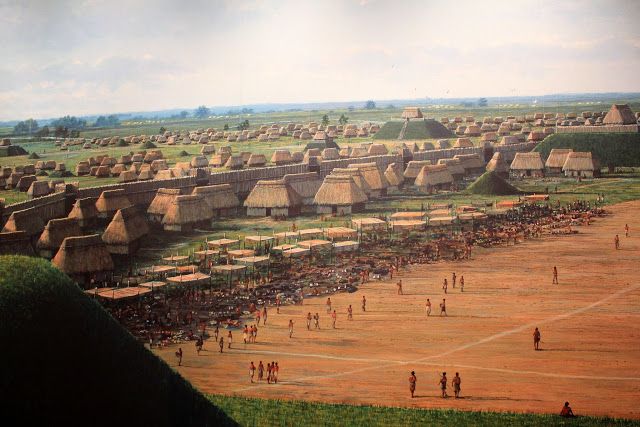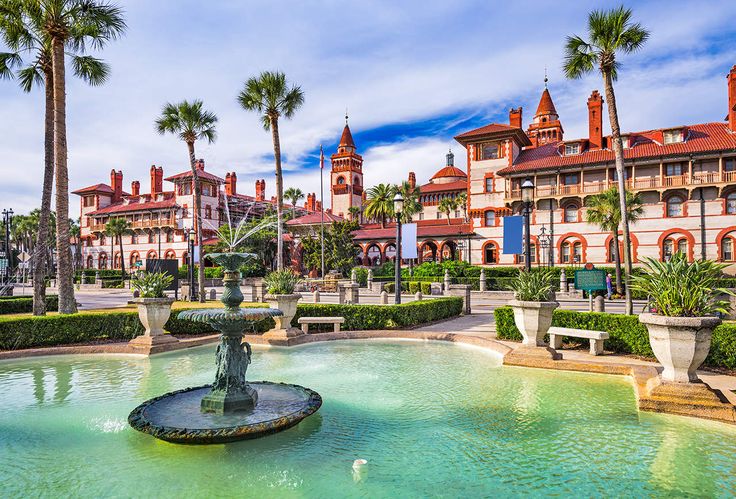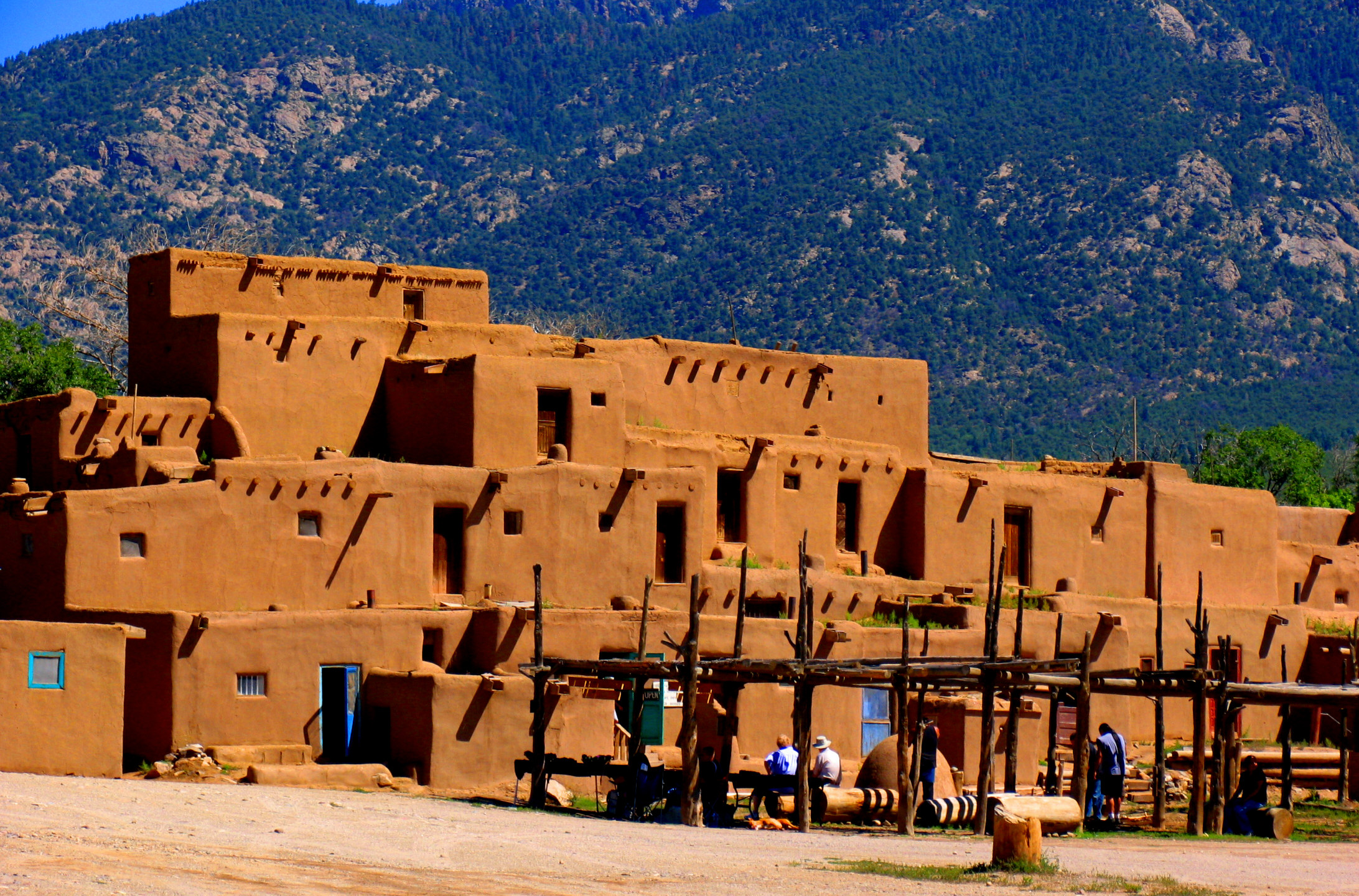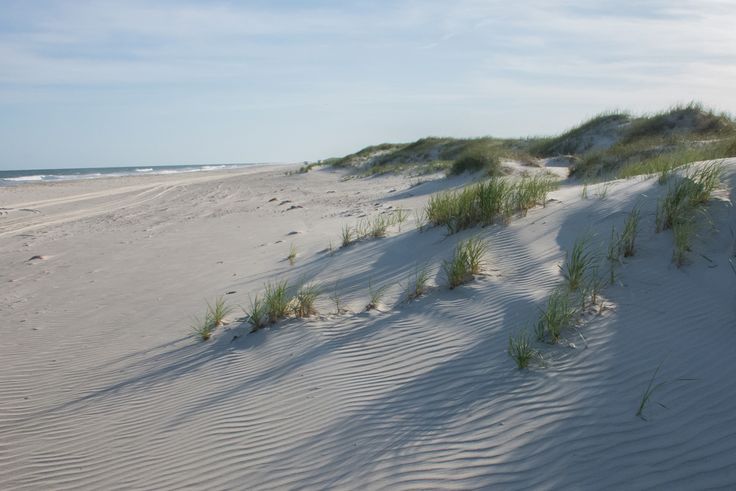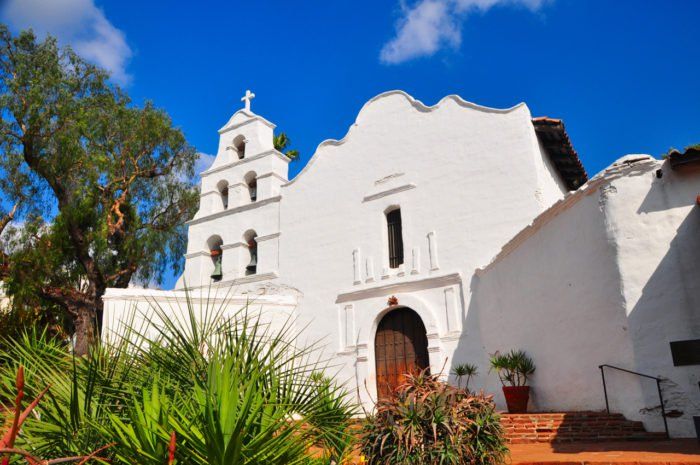History of Ancient Settlements
Definition and Criteria for Oldest Cities
The concept of ancient settlements has been a topic of interest among historians and archaeologists for centuries, as it provides valuable insights into the evolution of human societies and the development of urban centers.
In order to identify the oldest cities in the world, it is essential to establish clear criteria for evaluation. The following factors are typically considered:
- Age: The date at which a city was first settled or established is the primary factor in determining its age.
- Evidence of continuous habitation: A city must have been continuously inhabited for thousands of years to be considered one of the oldest cities.
- Archaeological evidence: Excavations and archaeological findings are crucial in confirming the existence of a settlement at a particular site.
- Documentation: Written records, such as ancient texts and historical accounts, can provide valuable information about a city’s history.
The definition of an “ancient settlement” or “old city” can be somewhat subjective, but it generally refers to a human settlement that has been continuously inhabited for at least 3,000 years. Some historians and archaeologists may also consider a city to be ancient if it has a significant cultural or historical significance.
In the context of cities in the United States, the oldest settlements are often found in areas with long histories of human habitation, such as the East Coast, where Native American tribes have lived for thousands of years. European colonization and settlement also played a significant role in shaping the history of these cities.
The following list highlights 7 of the oldest cities in the United States:
- St. Augustine, Florida (1565)
- Santa Fe, New Mexico (1610)
- Jamestown, Virginia (1607)
- New York City, New York (1624)
- Philadelphia, Pennsylvania (1682)
- Pittsburgh, Pennsylvania (1758)
- San Francisco, California (1776)
These cities have been continuously inhabited for centuries and have played significant roles in American history. They have also undergone significant transformations over the years due to various events, such as wars, immigration, and economic changes.
The term “oldest cities in the United States” can be somewhat subjective, but for this article, we will focus on cities that have been continuously inhabited since pre Colonial times. We will look at archaeological evidence, historical records from reputable sources like the Library of Congress and the Smithsonian Institution, as well as official documentation from state governments.
The history of ancient settlements in the United States is a rich and complex one, spanning thousands of years and numerous cultures. From the earliest Native American inhabitants to the European colonizers, each era has left its mark on the country’s cities.
To identify the oldest continuously inhabited cities in the United States, we must look beyond modern-day city limits and consider the areas that were once inhabited by indigenous peoples. Archaeological evidence suggests that many of these early settlements date back to the Paleoindian period, around 15,000 years ago.
One of the earliest known human habitation sites in North America is Meadowcroft Rockshelter, located near Washington, Pennsylvania. The site has been dated to between 19,000 and 16,000 years ago, making it one of the oldest continuously occupied sites in the country.
The next contender for the oldest city in the United States is St. Augustine, Florida. Founded by Spanish settlers in 1565, it is often considered the oldest continuously occupied European-established settlement in the continental United States. However, archaeological evidence suggests that there may have been earlier human habitation in the area.
The Ancestral Puebloan city of Taos Pueblo in New Mexico is another contender for the title of oldest continuously inhabited city. With a history dating back over 1,000 years, this ancient city has been continuously occupied since pre-Columbian times and is still home to a thriving Native American community.
The Hopewell Culture National Historical Park in Ohio is also notable for its ancient settlements. The park preserves the remains of the largest collection of earthworks north of Mexico, built by the Hopewell culture between 200 BCE and 500 CE.
The city of Cahokia in Illinois was once the capital of the Mississippian culture, a complex and powerful civilization that flourished from around 700 to 1400 CE. The city’s central plaza is the largest pre-Columbian earthen pyramid north of Mexico.
Other contenders for the oldest continuously inhabited cities in the United States include Jamestown, Virginia; Santa Fe, New Mexico; and Plymouth, Massachusetts, each with a rich history dating back to the early colonial period.
While there may be some debate over which city is truly the oldest, these ancient settlements have all contributed significantly to American history and continue to fascinate people today.
The study of ancient settlements in the United States offers a unique glimpse into the lives of our ancestors and helps us understand how they interacted with their environment, developed complex societies, and built lasting cities that still endure today.
Top 7 Oldest Cities in the United States
The Ancient Pueblo Settlements
The United States has a rich and diverse history, with many cities that have been inhabited for centuries. From the ancient Pueblo settlements to the colonial towns, these cities have played an important role in shaping the country’s culture, economy, and politics.
In this article, we will explore the top 7 oldest cities in the United States, each with its own unique history and charm. These cities are not only significant due to their age but also for their contributions to American society and culture.
St. Augustine, Florida (1565)
The oldest continuously occupied European-established settlement in the continental United States, St. Augustine was founded by Spanish settlers in 1565, more than 40 years before the English colonies at Jamestown or Plymouth.
This charming city has been preserved to reflect its rich history and boasts a wealth of cultural attractions, including historic landmarks like the Castillo de San Marcos fortress and the Fountain of Youth Archaeological Park.
Santa Fe, New Mexico (1610)
The oldest capital city in the United States, Santa Fe was founded as the capital of Spanish New Mexico in 1610 by colonists led by Pedro de Peralta.
This city has been continuously inhabited for over four centuries and is now a popular destination for tourists, with its unique blend of Native American, Spanish, and Mexican influences on display through its architecture, cuisine, and art.
Jamestown, Virginia (1607)
The first permanent English settlement in North America, Jamestown was established in 1607 by a group of investors who sent three ships to the New World with supplies and settlers.
This historic site is now a popular tourist attraction, featuring several restored buildings from the original settlement, including the Jamestown Church and the Powhatan Indian Village.
Plymouth, Massachusetts (1620)
The second successful English settlement in North America, Plymouth was founded by English Separatists who arrived on the Mayflower in 1620 and established a thriving community.
This historic town is now home to the iconic Plimoth Plantation museum, which showcases the life and culture of the Pilgrims and their interactions with the Wampanoag Native American tribe.
Salem, Massachusetts (1626)
Founded in 1626 as Naumkeag, this city was later renamed Salem and became a major hub for maritime trade and commerce during the colonial era.
Today, Salem is famous for its association with the Salem witch trials of 1692, which are commemorated at the Salem Witch Museum and other historic sites throughout the city.
Boston, Massachusetts (1630)
The largest city in New England during colonial times, Boston was founded by English Puritans who established a thriving commercial center that played a key role in American history.
This vibrant city is now a popular destination for tourists and locals alike, with its rich cultural attractions, including the Freedom Trail, which takes visitors through historic sites like Faneuil Hall and the Old State House.
Providence, Rhode Island (1636)
The oldest colonial charter in the United States, Providence was founded by Roger Williams as a refuge for persecuted Quakers and other religious minorities.
This historic city is now home to Brown University, one of the oldest institutions of higher learning in the country, and boasts a rich cultural scene with numerous art galleries and museums.
Each of these cities has a unique history and charm that reflects the diverse experiences and cultures of the United States. From the ancient Pueblo settlements to the colonial towns, these cities have played an important role in shaping American society and culture.
St. Augustine, Florida Founded in 1565 by Spanish settlers
Located in St. Johns County, Florida, St. Augustine is not only the oldest continuously occupied European-established settlement in the continental United States but also its oldest city.
Founded on September 8, 1565, by Spanish settlers under the leadership of Pedro Menéndez de Avilés, St. Augustine has a rich history that spans over four and a half centuries.
The city was named after the saint whose feast day is celebrated on August 28 – Saint Augustine of Hippo, who is revered as one of the most influential theologians in Christian tradition.
St. Augustine was originally established to counter English colonization efforts in North America, and it played a significant role in the development of European settlements along the eastern seaboard.
The city’s strategic location on the northeast coast of Florida allowed for trade with both Europe and the Caribbean, and its natural harbor provided protection from storms and attacks by other European colonizers.
Today, St. Augustine is a popular tourist destination known for its well-preserved Spanish colonial architecture, historic landmarks, and annual festivals celebrating its rich cultural heritage.
The city’s oldest structure is the Castillo de San Marcos fort, which was built in 1672 by the Spanish using coquina limestone to protect its harbor from English naval attacks during the Second Spanish Period.
Other notable historical sites include the Fountain of Youth Archaeological Park, where Ponce de Leon supposedly searched for eternal youth; the Oldest House Museum Complex, a collection of historic homes dating back to the 1600s; and the Oldest Wooden Schoolhouse, a replica of an 18th-century school built by British colonists.
St. Augustine’s unique blend of Spanish, British, and American influences has created a rich cultural heritage that is still celebrated today through its architecture, cuisine, art, and traditions.
Top 7 Oldest Cities in the United States
- Plymouth, Massachusetts (1620)
- Boston, Massachusetts (1630)
- New Amsterdam (New York City), New York (1653)
- St. Augustine, Florida (1565)
- Jamestown, Virginia (1607)
- New Haven, Connecticut (1638)
- Providence, Rhode Island (1636)
These cities have been an integral part of the United States’ history and development, showcasing its rich cultural diversity and colonial past.
St. Augustine is often considered the oldest continuously occupied Europeanestablished settlement in the continental United States. Its rich history and cultural significance have been recognized by UNESCO.
The United States has a rich history, with many cities that have been continuously occupied for centuries. Here are the Top 7 oldest cities in the US:
St. Augustine, Florida
Founded on September 8, 1565, by Spanish settlers from the nearby town of Nombre de Dios, St. Augustine is often considered the oldest continuously occupied European-established settlement in the continental United States.
Its rich history and cultural significance have been recognized by UNESCO, making it a must-visit destination for history buffs and travelers alike.
Santa Fe, New Mexico
Founded in 1610 by Spanish colonists, Santa Fe is the oldest capital city in the US. It has a rich cultural heritage, with a blend of Native American, Spanish, and Mexican influences.
The city’s historic downtown area features adobe buildings, art galleries, and museums, making it a great place to explore for art lovers and history enthusiasts.
Jamestown, Virginia
Established in 1607 by English settlers, Jamestown is the first permanent English settlement in what is now the United States.
The historic area features archaeological sites, museums, and re-creations of the original fort and village, making it a great place to learn about America’s early history.
Plymouth, Massachusetts
Founded in 1620 by English Separatists who later became known as the Pilgrims, Plymouth is famous for its association with the Mayflower Compact and the signing of the Treaty of Portsmouth.
The historic area features landmarks such as the Mayflower II replica ship and the Plimoth Grist Mill, which provides a glimpse into life in 17th-century America.
Charleston, South Carolina
Founded in 1670 by English colonists, Charleston is one of the oldest cities in the US that has been continuously occupied.
The historic district features beautiful architecture, including antebellum mansions and gardens, as well as art galleries and museums showcasing the city’s rich history and culture.
Annapolis, Maryland
Founded in 1695 by English colonists, Annapolis is a charming colonial-era city that has been continuously occupied since its founding.
The historic district features beautiful architecture, including the United States Naval Academy and the Maryland State House, which offers great views of the city.
Philadelphia, Pennsylvania
Founded in 1701 by English Quakers, Philadelphia is a vibrant and culturally rich city that has been continuously occupied since its founding.
The historic district features landmarks such as Independence Hall, where the Declaration of Independence was signed, and the Liberty Bell, an iconic symbol of American freedom.
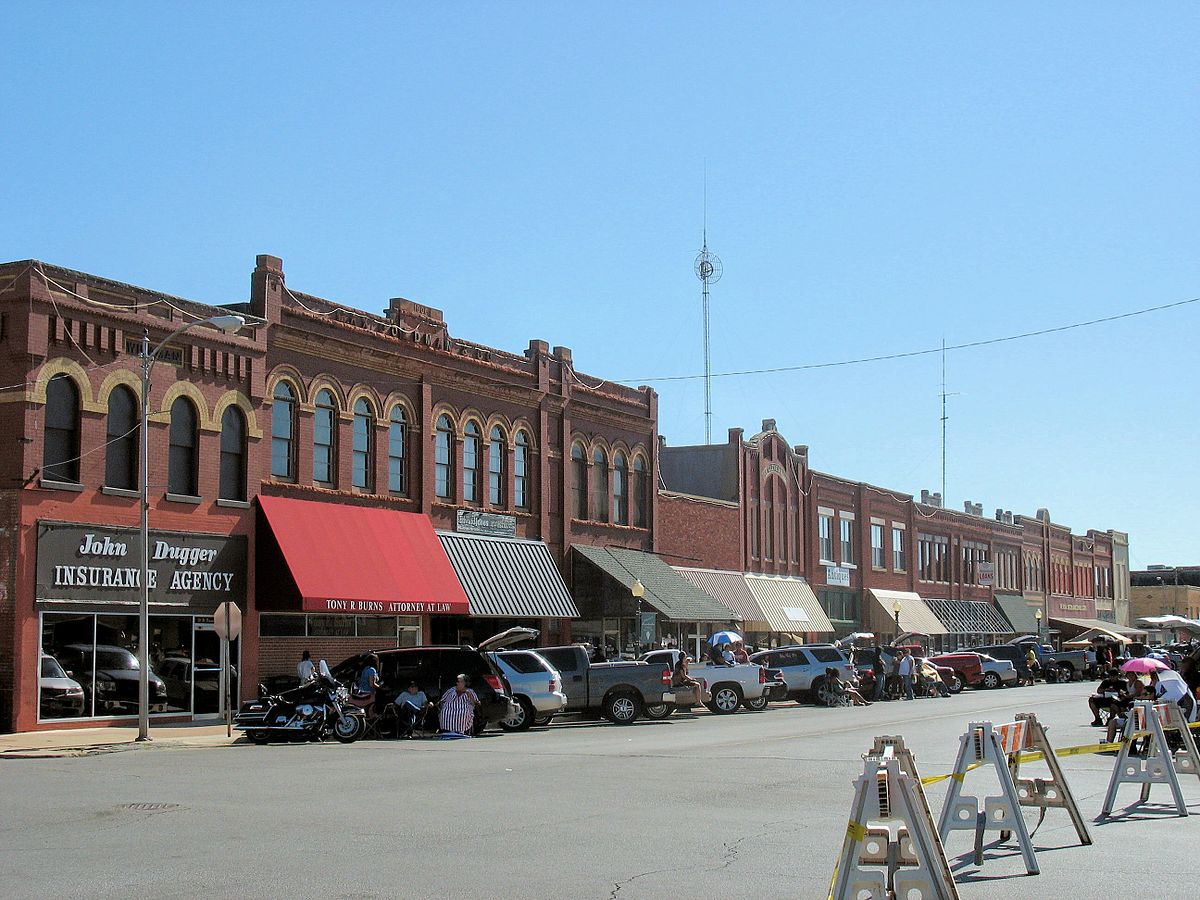
Anadarko, Oklahoma Ancient Wichita Village
Anadarko, Oklahoma: This city was originally inhabited by the Apache and Comanche tribes, but it wasn’t until the late 1800s that white settlers began to arrive. Founded in 1904, Anadarko is home to numerous Native American artifacts and historical landmarks, including the Ancient Wichita Village.
The village features a collection of ancient earthlodges built by the Wichita people between 1790 and 186 The structures have been reconstructed based on archaeological findings and provide a unique glimpse into the lives of the early inhabitants. Visitors can explore the lodges and learn about the customs, traditions, and way of life of the Wichita people.
St. Augustine, Florida: Founded in 1565 by Spanish settlers, St. Augustine is the oldest continuously occupied European-established settlement in what is now the continental United States. The city boasts a rich history, with numerous landmarks such as the Castillo de San Marcos fort and the Fountain of Youth Archaeological Park.
New Orleans, Louisiana: Although New Orleans was founded in 1718 by French colonists, its modern history dates back to the Spanish period in the early 1800s. The city is famous for its Mardi Gras celebrations, jazz music, and delicious Creole cuisine. Visitors can explore the historic French Quarter and Jackson Square, as well as take a steamboat ride along the Mississippi River.
Santa Fe, New Mexico: Founded in 1610 by Spanish colonists, Santa Fe is the oldest capital city in what is now the United States. The city’s rich cultural heritage is reflected in its historic architecture, art galleries, and vibrant arts scene. Visitors can explore the Palace of the Governors, which is the oldest continuously occupied public building in the US.
St. Louis, Missouri: Founded in 1764 by French fur traders, St. Louis has a rich history dating back to the early days of the American West. The city was named after King Louis IX and features numerous historic landmarks such as the iconic Gateway Arch and the Cathedral Basilica of St. Louis.
Mobile, Alabama: Founded in 1702 by French colonists, Mobile is one of the oldest cities in what is now the United States. The city has a rich history and was once an important port for the Confederacy during the Civil War. Visitors can explore the historic downtown area, visit the USS Alabama Battleship Memorial Park, or take a stroll through the beautiful Bellingrath Home.
San Antonio, Texas: Founded in 1718 by Spanish colonists, San Antonio is known as one of the oldest cities in what is now the United States. The city features numerous historic landmarks such as the Alamo, where the famous Battle of the Alamo took place during the Texas Revolution. Visitors can explore the River Walk, visit the Tower of Americas, or take a stroll through the beautiful San Antonio Missions National Historical Park.
The cities mentioned above have rich histories and are home to numerous historic landmarks that showcase their unique cultural heritage. From Native American artifacts to Spanish colonial architecture, there is something for everyone in these ancient cities.
Excavations at this site have revealed that Native American tribes inhabited the area over 7,000 years ago.
The United States has a rich and diverse history, with many cities that have been inhabited for thousands of years. Excavations at sites such as Angel Mounds in Indiana have revealed that Native American tribes inhabited the area over 7,000 years ago.
Coshocton, Ohio is another city with a long history dating back to 200 AD when it was a major center for trade and commerce along the Muskingum River. The city has been continuously occupied since then, making it one of the oldest cities in the United States.
The oldest European settlement on the mainland is found at San Juan Capistrano in California. The city was originally a Spanish mission established by Father Junipero Serra in 1769 and has been continuously occupied ever since.
Another city with a long history is New Orleans, Louisiana, which dates back to the early 18th century when it was founded by French colonists. The city’s unique blend of cultures has made it a fascinating place to visit, with a rich history and architecture that reflects its multicultural heritage.
St. Augustine in Florida is often referred to as the oldest continuously occupied European-established settlement in the continental United States. Founded by Spanish settlers in 1565, the city has a rich history dating back over 450 years.
The city of Annapolis in Maryland was founded in 1695 and has been continuously occupied ever since. The city is home to many historic buildings, including the Maryland State House and the United States Naval Academy.
Providence, Rhode Island was founded by Roger Williams in 1636 as a haven for those seeking religious freedom. The city’s rich history and architecture make it one of the most unique cities in the United States.
Caddoan Mounds State Historic Site, Texas Caddo Indian Settlements
The United States has a rich and diverse history, with many cities that date back to ancient times. From the Caddoan Mounds State Historic Site in Texas to the oldest city in the United States, these seven cities are steeped in history and offer a glimpse into the lives of the earliest inhabitants of North America.
While most people associate the United States with modern cities like New York, Los Angeles, or Chicago, there are many older cities that have been continuously occupied for centuries. These cities have witnessed significant events throughout American history and continue to play important roles in their respective regions. In this article, we will explore the top 7 oldest cities in the United States.
But first, let’s take a look at one of the oldest Caddo Indian settlements – the Caddoan Mounds State Historic Site in Texas. This archaeological site dates back to around 700-1200 CE and is located on the Red River near the city of Nacogdoches. The site features several earth mounds that were built by the Caddo people for ceremonial and burial purposes.
Now, let’s move on to our countdown of the top 7 oldest cities in the United States.
St. Augustine, Florida (1565) – Founded by Spanish settlers, St. Augustine is the oldest continuously occupied European-established settlement in the continental United States. The city has a rich history that dates back over 450 years and features many historic buildings, museums, and landmarks.
Santa Fe, New Mexico (1610) – As the capital of New Mexico, Santa Fe is steeped in Spanish colonial history. The city was founded by Spanish colonists and features many adobe buildings that date back to the 17th century.
Jamestown, Virginia (1607) – Located on the James River, Jamestown is one of the oldest English settlements in North America. Founded by John Smith and a group of settlers from England, the town was established as a base for further exploration and settlement of the New World.
Plymouth, Massachusetts (1620) – As the site of the Pilgrims’ landing in 1620, Plymouth is one of the most famous settlements in American history. The town was founded by William Bradford and a group of English Separatists who established the first successful colony at Plymouth Harbor.
New Amsterdam (New York City), New York (1626) – Founded by Dutch colonists, New Amsterdam was a major commercial center that played an important role in the early history of New York City. The town was renamed New York by the English after they took control of it in 1664.
Caddoan Mounds State Historic Site, Texas (700-1200 CE) – As mentioned earlier, this archaeological site is located near Nacogdoches and features several earth mounds built by the Caddo people for ceremonial and burial purposes. The site dates back to around 700-1200 CE.
Taos Pueblo, New Mexico (1000-1450 CE) – As one of the oldest continuously inhabited communities in North America, Taos Pueblo is a UNESCO World Heritage Site that features many adobe buildings dating back centuries. The pueblo has been home to various Native American tribes over the years and continues to be an important cultural center for its residents.
Dating back to around 800 AD, these mounds were built by the Caddo people for ceremonial purposes.
- The history of human settlement in what is now the United States dates back thousands of years, with various indigenous cultures building complex societies and cities that have been remarkably preserved over time.
- One notable example of ancient urban planning can be seen at the Caddo Mounds, located near Nacogdoches, Texas. This site was inhabited by the Caddo people from around 800 AD until European contact in the 16th century.
- However, there are several cities that predate this era of settlement, with their origins dating back to ancient times and evolving over centuries into the vibrant metropolises we know today.
Here is a list of seven oldest continuously occupied cities in the United States:
- St. Augustine, Florida: Founded by Spanish settlers in 1565, St. Augustine claims to be the oldest continuously occupied European-established settlement in what is now the continental United States.
- The city’s rich history is evident in its architecture, which features a mix of Spanish Colonial and Renaissance Revival styles, as well as numerous historic landmarks such as the Castillo de San Marcos fort and the Fountain of Youth Archaeological Park.
- Santa Fe, New Mexico: Established as capital of the Spanish province of Santa Fe de Nuevo México in 1610, Santa Fe boasts an impressive array of adobe architecture that reflects its cultural heritage.
- From the Palace of the Governors, the oldest continuously occupied public building in what is now the United States, to the Loretto Chapel, a stunning example of Gothic Revival design, Santa Fe’s historic district offers a glimpse into the city’s storied past.
- Jamestown, Virginia: Founded in 1607 by British settlers, Jamestown marks the beginning of English colonization in North America and is often regarded as one of the most significant events in American history.
- Today, visitors can explore the reconstructed fort and museum, which feature artifacts from the original settlement and provide insight into life in 17th-century Virginia.
- Taos Pueblo, New Mexico: This ancient Native American village has been continuously occupied since around 1000 AD, making it one of the oldest continuously occupied communities in North America.
The adobe buildings that comprise Taos Pueblo are remarkably well-preserved and offer a glimpse into the traditional lifestyle of the Tiwa people, including their homes, ceremonial spaces, and ancient agricultural systems.
Nacogdoches, Texas: This small town has a rich history dating back to around 800 AD, when it was inhabited by the Caddo people. Today, visitors can explore the Stephen F. Austin State University campus, which features several historic buildings and museums that showcase the region’s cultural heritage.
Sante Fe de Nuevo Mexico (now part of Albuquerque), New Mexico: This site marks another important period in the early history of the United States, as it was an early Spanish colonial settlement established around 1540 AD.
The area is now home to a significant collection of archaeological sites that date back thousands of years and offer insight into the lives of ancient cultures that once inhabited this region.
Acoma Pueblo, New Mexico: This historic Native American village was founded in the 12th century AD by the Tiwa people and remains one of the oldest continuously occupied communities in North America.
The multi-story adobe dwellings that comprise the pueblo offer a glimpse into traditional Native American architecture and traditions, including the famous “Sky City” – the highest inhabited town in the United States.
Taos Pueblo, New Mexico Ancient Adobe Buildings
Taos Pueblo, located in northern New Mexico, is considered one of the oldest continuously inhabited communities in the United States. The adobe buildings that make up this ancient village date back to the 1000s AD.
The history of Taos Pueblo stretches back over a thousand years and is the ancestral home of the Tiwa people. This historic city has been designated as one of the oldest continuously occupied communities in the United States, with some estimates suggesting it may have originated as early as 900 AD.
Many of the original adobe buildings that make up Taos Pueblo still stand today and offer a glimpse into the lives of the Tiwa people. The architecture of these structures is unique and blends traditional Native American designs with Spanish influences from the colonial period.
The use of adobe in building construction at Taos Pueblo dates back to ancient times, when the material was first used by Native Americans for its strength, durability, and resistance to extreme weather conditions. The adobe buildings in this village are made from a mixture of earth, water, and other natural materials that provide excellent insulation against heat and cold.
Visitors can explore Taos Pueblo’s historic adobe buildings and learn more about the culture and history of the Tiwa people through guided tours. These tours offer an opportunity to step back in time and experience the traditions and ways of life of this ancient Native American community.
Taos Pueblo has been designated as a National Historic Landmark by the U.S. Department of the Interior and is also part of UNESCO’s Intangible Cultural Heritage list. The preservation of these historic adobe buildings is crucial in order to maintain the cultural identity and traditions of the Tiwa people for generations to come.
In addition to its rich history, Taos Pueblo is a thriving community with many shops, restaurants, and art galleries featuring traditional Native American crafts and artwork. Visitors can experience the vibrant culture and spirit of this ancient city by exploring its historic adobe buildings, attending cultural events, and interacting with local residents.
Overall, Taos Pueblo’s ancient adobe buildings are a testament to the rich history and cultural heritage of the United States’ oldest continuously inhabited community. The preservation of these structures is essential in maintaining the traditions and identity of this unique and fascinating piece of American history.
The multistory adobe homes of Taos Pueblo are a testament to the ingenuity and craftsmanship of its inhabitants.
The United States has a rich and diverse history, with numerous cities that have been continuously inhabited for centuries. From Native American settlements to colonial-era towns, these ancient cities are a testament to the resilience and determination of their founders.
Here are the top 7 oldest cities in the United States:
Saint Augustine, Florida
Founded in 1565 by Spanish settlers, Saint Augustine is widely regarded as the oldest continuously occupied European-established settlement in the continental United States.
- The city has a rich cultural heritage, with many historic sites and landmarks, including the Castillo de San Marcos fort and the Oldest House Museum Complex.
Taos Pueblo, New Mexico
Taos Pueblo is an ancient adobe settlement that has been continuously inhabited by the Tiwa people for over 1,000 years.
- The multistory adobe homes of Taos Pueblo are a testament to the ingenuity and craftsmanship of its inhabitants.
- The pueblo is listed as a UNESCO World Heritage Site and features many historic sites, including the ancient kivas (ceremonial chambers) and the San Geronimo de Taos Church.
Jamestown, Virginia
Founded in 1607 by English settlers, Jamestown is the first permanent English settlement in North America.
- The city has a rich history, with many historic sites and landmarks, including the Jamestown Fort and the Archaeological Site.
Santa Fe, New Mexico
Founded in 1610 by Spanish settlers, Santa Fe is the oldest continuously occupied capital city in the United States.
- The city has a rich cultural heritage, with many historic sites and landmarks, including the Palace of the Governors (the oldest continuously occupied public building in the United States) and the New Mexico State Capitol.
Salem, Massachusetts
Founded in 1626 by English settlers, Salem is a city with a rich history and culture.
- The city has a notorious history, being the site of the Salem witch trials in 1692-1693.
Plymouth, Massachusetts
Founded in 1627 by English settlers, Plymouth is famous for its historic Mayflower Compact and the landing of the Pilgrims.
- The city has a rich history, with many historic sites and landmarks, including the Plimoth Plantation (a living museum featuring replica 17th-century buildings) and the Mayflower Society House.
Boston, Massachusetts
Founded in 1630 by English settlers, Boston is one of the oldest cities in North America.
- The city has a rich history, with many historic sites and landmarks, including the Old State House (the oldest surviving public building in Boston) and the Freedom Trail (a 2.5-mile trail that leads to several historic sites).
Other Notable Settlements
Ancient Coastal Communities
The United States has a rich history that spans thousands of years, with various civilizations rising and falling on its soil. Among these ancient settlements, there are some notable ones that have left an indelible mark on the country’s past.
One such settlement is Cahokia, located near modern-day St. Louis in Illinois. It was once a bustling metropolis that served as the capital of the Mississippian culture between 700 and 1400 AD. This ancient city is considered one of the largest pre-Columbian cities north of Mexico.
Cahokia’s peak population is estimated to have been around 20,000 inhabitants, which is impressive given its time period. The city was home to a sophisticated agricultural system, as well as advanced craftsmen and traders who engaged in extensive trade networks.
Another notable settlement is the Taos Pueblo in New Mexico, which has been continuously inhabited for over 1,000 years. This ancient village was built by the Tiwa people, an indigenous tribe that settled there during the early part of the 9th century AD.
The Taos Pueblo’s unique adobe architecture, where residents live in multi-story dwellings made from earth and wood, has withstood the test of time. This ancient community has played a significant role in preserving its cultural heritage, including traditional farming practices, crafts, and spiritual rituals.
Further east, the Hopewell Culture National Historical Park in Ohio was once an important ceremonial center for various Native American tribes, including the Hopewell people, who lived there between 200 BC and AD 50 This settlement was a major hub of trade and commerce during its time, with artifacts discovered indicating extensive connections to other parts of North America.
The park’s earthen mounds are some of the most impressive ancient structures in North America, rivaling those found at Cahokia or the Moundville site in Alabama. These monumental earthworks demonstrate a level of engineering and architectural sophistication that is still studied by archaeologists today.
Portsmouth Island, North Carolina 16thcentury English Settlement
The settlement history of America is as vast and diverse as the country itself, with numerous colonies established by European settlers throughout its territories over the centuries. Among these early settlements was Portsmouth Island, located off the coast of North Carolina.
Portsmouth Island was founded in the 16th century by English settlers, marking one of the earliest recorded instances of English colonization in what is now the United States. The island’s strategic location at the mouth of the Cape Fear River made it an attractive site for trade and commerce.
The early history of Portsmouth Island is somewhat shrouded in mystery, with limited documentation available about the lives of its original inhabitants. However, it is known that the English settlers brought their own language, culture, and customs to the island, which would eventually shape the distinct identity of the area.
Despite its rich history, Portsmouth Island faced numerous challenges during the colonial era, including conflicts with Native American tribes, disease, and harsh environmental conditions. The settlement’s population fluctuated over time, but it continued to serve as a vital link between England and the New World.
The 18th century saw the rise of trade and commerce in Portsmouth Island, with the establishment of ports and warehouses for the exportation of goods such as cotton, tobacco, and naval stores. The island’s economy grew rapidly during this period, making it one of the most prosperous settlements in the region.
Unfortunately, the success of Portsmouth Island came to a swift end with the arrival of British forces during the American Revolution. In 1775, the island was captured by British troops and its residents were either forced to flee or remain as prisoners of war. The settlement’s infrastructure and economy suffered significantly during this period.
Following the Revolutionary War, Portsmouth Island experienced a gradual decline in population and economic activity. While it continued to serve as an important transportation hub, its strategic location was eventually eclipsed by other ports and cities.
In 1833, a devastating fire swept through the island’s settlement, destroying much of its remaining infrastructure. Although efforts were made to rebuild and restore the area, Portsmouth Island’s decline accelerated in subsequent years, with many residents abandoning their homes to seek opportunities elsewhere.
Today, Portsmouth Island is a testament to the resilience and determination of its early inhabitants. Despite facing numerous challenges throughout its history, the island has maintained a rich cultural heritage that continues to captivate visitors from around the world.
This island off the coast of North Carolina has been home to various settlements throughout history.
The island of Roanoke, also known as the Lost Colony, has been home to various settlements throughout history.
In terms of other notable settlements on this island, there are a few that stand out:
English Colonies
- In 1585, Sir Walter Raleigh established the first English colony on Roanoke Island.
- The colonists built Fort Ralph and established trade relationships with the local Algonquian-speaking Native American tribes.
- Norfolk (Nansemond) Tribe
- Prior to the arrival of English colonists, the Norfolk tribe inhabited the island.
- The Norfolk tribe was a subgroup of the larger Powhatan Confederacy.
- Machapunga and Weapemeoc Tribes
- Other Native American tribes that inhabited Roanoke Island include the Machapunga and Weapemeoc tribes.
- These tribes spoke different languages and had distinct cultures, but they shared a common interest in the resources available on the island.
The presence of these various settlements has left an enduring legacy on Roanoke Island, reflecting both the complex history of Native American peoples and European colonization efforts.
Mission San Diego de Alcalá, California Spanish Mission Established in 1769
Mission San Diego de Alcalá was founded on July 16, 1769, by Spanish friar Junípero Serra as a Spanish mission and one of the first of the chain of California missions.
The Mission was initially established as the second Spanish mission in what is now the state of California, with the goal of converting Native Americans to Christianity and establishing a European settlement in the area.
Key Features
- The mission was originally called “San Diego de Alcalá,” after the city of Alcalá in Spain, which had strong ties to the Serra family.
- It was designed and built by Spanish military officer Gaspar de Portolà, who later went on to become a prominent figure in California’s early history.
The mission complex itself was made up of several buildings, including the main church, which featured a distinctive wooden bell tower, as well as other structures such as dormitories for the missionaries and Native American converts, workshops for artisans, and even a hospital.
Legacy
- Mission San Diego de Alcalá played an important role in the early history of California, serving not only as a center of Christian missionary work but also as a military outpost and a symbol of Spanish colonial power.
- The mission was instrumental in establishing the city of San Diego as it exists today, with much of the original town laid out around the mission complex.
Today, Mission San Diego de Alcalá is one of five historic missions that comprise the Old Town San Diego State Historic Park and is still an active Catholic parish, attracting tourists and worshipers alike with its stunning architecture and rich history.
Mission Facts
- Original Name: Mission San Diego de Alcalá
- Date Established: July 16, 1769
- Friar Founded By: Junípero Serra
The mission’s legacy is a testament to the enduring impact of Spanish colonialism in California and continues to inspire interest in the state’s rich cultural heritage.
Located near presentday San Diego, this historic mission marks the arrival of European settlers on the West Coast.
Located near present-day San Diego, Mission San Diego de Alcalá marks a significant milestone in American history as it signifies the arrival of European settlers on the West Coast.
This historic mission was established by Spanish friar Juan María de Salvatierra and Father Kentner, who were both part of an expedition led by Governor Gaspar de Portolà
The mission, which was founded on July 16, 1769, played a crucial role in the Spanish colonization of California. It served as a base for further exploration and settlement in the region.
Today, visitors can still walk through the adobe buildings that were constructed using traditional techniques from Spain and Mexico, showcasing the rich cultural heritage of the area.
The site is also home to numerous artifacts, including the original chapels, a collection of antique bibles, and several tombstones bearing the names of early settlers and missionaries.
Visitors can experience the tranquil atmosphere and appreciate the beautiful gardens and courtyards that surround the mission complex, which offer stunning views of the surrounding landscape.
- Austin, Texas - September 4, 2024
- Country Flags With Stars - September 4, 2024
- 7 Oldest Cities In The United States - September 4, 2024

